‘We wouldn’t get away with any of it today’: is Octopussy the most outrageous Bond yet?

Roger Moore couldn’t believe that James Bond had to wear a gorilla costume – one of several unlikely disguises in Octopussy. “These actors never read the bloody script until the night before,” laughs Octopussy director John Glen. “Roger came in and said, ‘You can’t be serious about me dressing up in that costume, can you?’ Roger was looking at me like I was completely mad. But he went along with it.”
Octopussy, which hit cinemas in June 1983, put Bond on the trail of a Fabergé egg, a radical Russian general, and Octopussy herself – smuggler, cult leader and all-round temptress (played by returning Bond girl Maud Adams). All of which leads Bond onto a circus train, where he hides from a pair of knife-throwing twins by slipping into the nearest fancy dress. “He’s in this carriage and there are all these costumes hanging up,” says Glen. “Suddenly: where did Roger go? Then we cut to this gorilla costume and you see Roger’s eyes behind the mask…”
In Octopussy, Rodge would not only don a gorilla suit, but would also disarm a nuclear warhead while dressed as a clown – giant shoes and all – and swing through the jungle to the sound of a Tarzan cry. “There were critics at the time who said maybe I went too far,” says Glen. “Maybe I did. There’s an awful lot of slapstick, when you think about it.”
Indeed, on the grand spectrum of all things Bond, Octopussy swings towards the dafter end – by way of some clanging cultural stereotypes and cleavage-ogling cheekiness.
But the image of Moore in his clown costume, sometimes cited as Bond’s daftest moment of all, belies what Octopussy is beneath the make-up: a thumping action film that goes stunt-for-stunt with the more grizzled likes of Casino Royale. Combining the action with Rodge’s particulars (cue eyebrow raise), Octopussy is a Roger Moore Bond film of the purest kind.
Octopussy also pitted Bond against a tough opponent: his old self, as Sean Connery returned to play 007 in the rival, rogue Bond film, Never Say Never Again, also released in 1983 – “the Battle of the Bonds”.
“Octopussy is often overlooked in favour of Roger’s other entries, such as Live and Let Die and The Spy Who Loved Me,” says Matthew Field, co-author of the comprehensive Bond history Some Kind of Hero. “However, Moore’s sixth movie has remained one of my favourites. Bond movies must be entertaining and Octopussy delivers on every level.”
Octopussy was made amid some behind-the-scenes turbulence. United Artists, Bond’s long-time distributor, took a major hit after Michael Cimino’s mega-flop, Heaven’s Gate, and was sold to MGM. Glen remembers “terrific pressure” from MGM to economise Octopussy.
Glen was promoted to director on the previous film, For Your Eyes Only, after working as editor and second unit director on numerous Bonds before that (he would direct a record five Bonds altogether). “We made films around the $30 million mark, which wasn’t huge for this type of movie,” says Glen, now 90. “We thought we were good value but the hatchet men came, trying to get us to cut the scenes that make Bond what it is. We fought and fought and there was some sort of compromise.”
There was also serious talk about replacing Moore. Serious enough that it convinced Glen. “I fell for it,” he chuckles.
Glen ran screen tests for potential new Bonds, including American actor James Brolin. He filmed a test with Adams, who was invited back after her role as a doomed mistress in The Man with The Golden Gun.
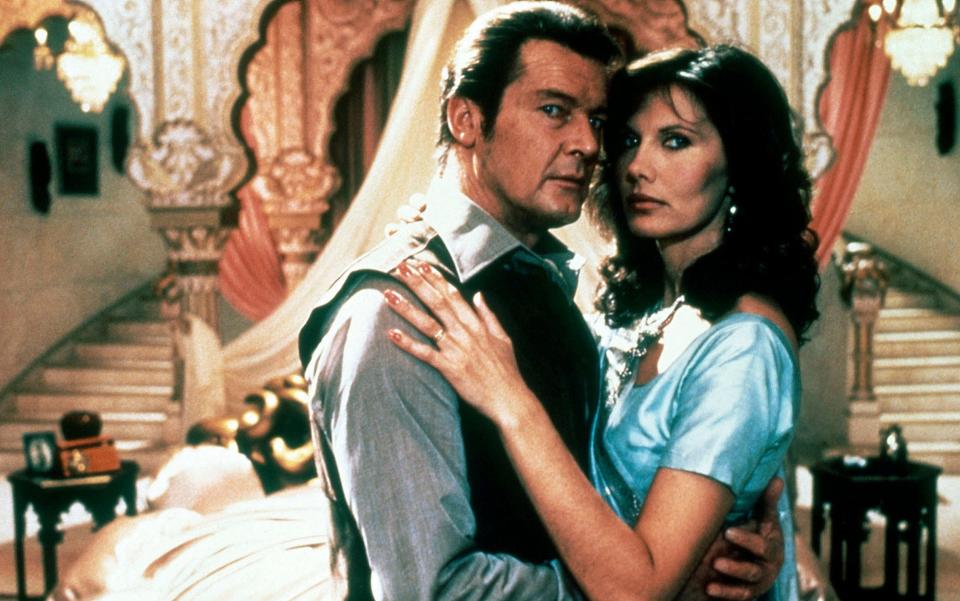
Moore’s initial three-picture deal had expired and he now worked on a film-by-film basis. Every Bond film, it seemed, could be Roger’s last. But it was all part of an ongoing game between Moore and producer Albert ‘Cubby’ Broccoli – leverage for Moore to negotiate. “I must have been quite naïve,” says Glen. “Cubby was a great gambler and Roger wasn’t bad at it, either.”
It certainly wasn’t the time to debut a new 007. Never Say Never Again was ready to go into production too, the result of a decades-long battle over the rights of Thunderball. Never Say Never Again was “unofficial” – as in, not made by Broccoli’s EON Productions, the Bond producers since 1962’s Dr No – but the rogue film had a not-so-secret weapon in Connery, who was lured out of Double-O retirement after 12 years.
“They’d got the plum actor with Sean Connery,” says Glen. “There’s no doubt about it. He was the originator. If you ask people who their favourite Bond is, millions worldwide would say Sean Connery.”
Never Say Never Again was partly filmed at Elstree Studios, just over 20 miles from Octopussy’s production base at Pinewood. The tabloids revelled in Connery vs. Moore.
The Connery-starring film had plum source material, too – it was a remake of the hugely successful Thunderball – whereas the official Bond team were now scraping the barrel of Ian Fleming tales. British writer George MacDonald Fraser, author of the Flashman stories, came onboard to write an original Bond adventure (though some scenes were inspired by remaining Fleming tidbits – the short stories Octopussy and The Property of a Lady). When Fraser was introduced to Moore as the writer, the latter quipped “Commiserations.”
Glen recalls that on Fraser’s first day, they sat and discussed ideas while waiting for Broccoli to join them. Cubby eventually arrived with a lawyer in tow, said a quick hello, went into his office, closed the door, and stayed in meetings about Never Say Never Again legal issues all day. “George looked baffled,” says Glen. “I told him, ‘You’ll get used to it.’”
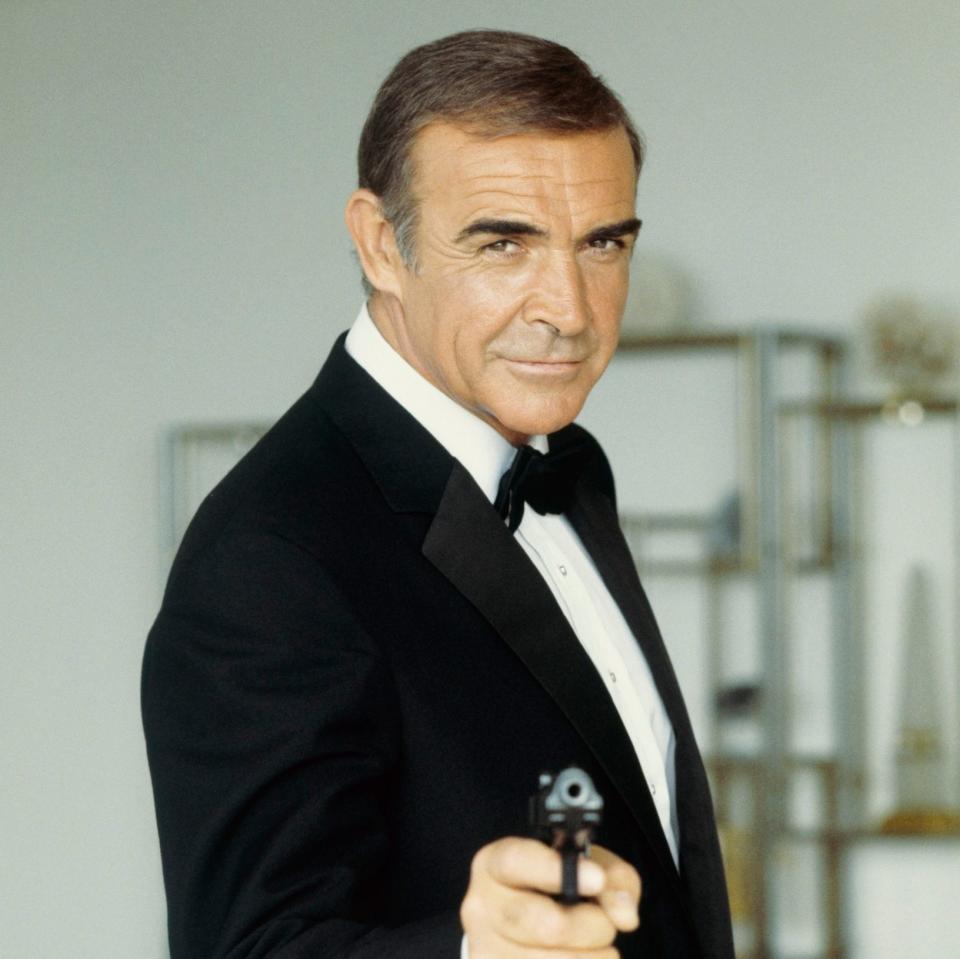
Indeed, the appropriation of Bond weighed heavily on Broccoli. “There had been various court cases and lawsuits going on in the background,” says Glen. “Cubby never bothered me too much with it.” The Fleming estate, reportedly financed by Broccoli’s company, sought an injunction against the distribution of the rival film.
But it wasn’t only Never Say Never Again that bothered Cubby. Fraser, writing in his memoir, recalled a tense moment when Moore was offered a cameo in a non-related thriller. “I think [Cubby] felt it would somehow tarnish the Bond image,” wrote Fraser. “Roger listened politely, and then said gently: ‘But Cubby, I’ve got to keep the cars filled up.’”
Fraser suggested ideas that were ultimately scrapped: a pre-titles scene at the Isle of Man TT motorcycle races – which could have been thunderously exciting, but would need to be filmed at the real event – and a cameo from Gert Fröbe as Goldfinger. It was also Fraser’s idea to stick 007 in the gorilla suit.
In fact, there was almost more monkeying around. Fraser and Glen were trying to pit Bond against an actual gorilla, after meeting a silverback at the private zoo of casino owner John Aspinall. “It was an incredible animal,” says Glen. “Aspinall was keen for us to use him in the movie. We tried to incorporate him in the script, like a guard dog, but instead of a dog, it’s a gorilla. We played with ideas but it was difficult to make it into a story.”
With the script seemingly safe in Fraser’s hands, Glen returned to Pinewood to begin work on the action sequences. “The next evening the phone rang,” says Glen. “It was Cubby. He said, ‘Get your arse back here. We’ve thrown that script out – we’re writing another script.’ How are we going to make this film? We were shooting in six weeks’ time! We prepared the film in record time.”
Fraser's script was revised by veteran Bond writer Richard Maibaum, along with Cubby’s stepson and current Bond producer Michael G. Wilson.
Octopussy begins with an oddly underrated sequence. Bond, disguised with a fake moustache as Colonel Toro (“Sounds like a load of bull”), infiltrates the base of a South American regime and makes his escape in a BD-5J Acrostar jet – an ultra-lightweight plane with fold-up wings. The flying was performed by stunt pilot JW ‘Corkey’ Fornof, who offered to perform the stunt's dangerous money shot: flying the jet right through a plane hangar – in one end and out the other.
Instead, the shot was completed by using miniatures and mounting the jet (with Roger actually sitting in the cockpit) on a Jaguar car, which drove through the hangar. “I always prayed that everyone else knew what they were doing, and they weren’t like me,” said Moore in a making-of documentary. “I had no idea what I was doing. I was just sitting there.”
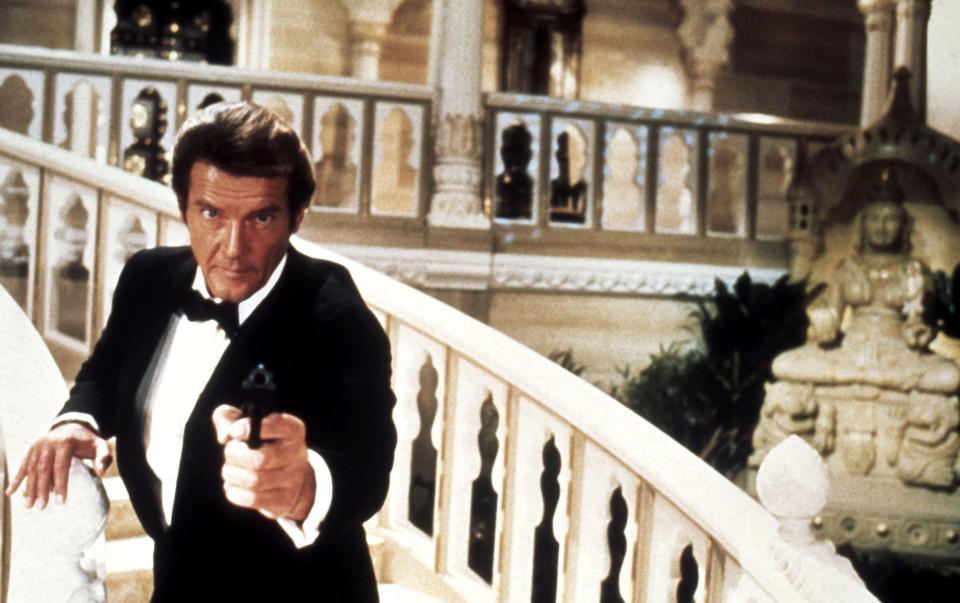
Octopussy then takes a sinister turn as a clown – actually 009 (played by stuntman Andy Bradford) – is hunted and murdered by the knife-throwing twins (David and Anthony Meyer). The scene has a darker edge than the film is generally remembered for. Indeed, between this and the openings of The Living Daylights and A View To A Kill – which bump off 004 and 003 respectively – Glen killed more Double-Os than any Bond villain.
The murder leads Bond to India, where he uncovers a smuggling ring led by the mysterious Octopussy and an exiled Afghan prince, Kamal Khan (the always-debonair Louis Jourdan), who – with the assistance of the barmy Russian general, Orlov (Steven Berkoff) – smuggle treasures pilfered from the Kremlin via Octopussy’s travelling circus. But Orlov has bigger ideas: to set off a nuclear bomb and force Western disarmament.
Berkoff is suitably unhinged as Orlov – part power-mad fruit loop, part common thief. “Effectively a version of Putin,” says Field. Barbara Broccoli, daughter of Cubby and current Bond series producer, recommended Berkoff after seeing him perform his own play. Glen went to see Berkoff on stage, too. “He transformed himself into a mouse,” cries Glen. “He’s very clever… A very odd man.”
Glen recalls that their Kremlin war room – a grandiose set built by production designer Peter Lamont, with an elliptical table and rotating circular floor – was so impressive that it made Berkoff go extra loopy as Orlov. “He went crazy,” exclaims Glen. “He was going completely over the top, prancing around the set and saying, ‘We will attack the West!’ Elaine Schreyeck [overseeing continuity] said, ‘You’ve got to cut him down, he’s so over the top.’ I said, ‘Don’t worry, it’ll be fine.’ In a Bond film you need people to be over the top.”
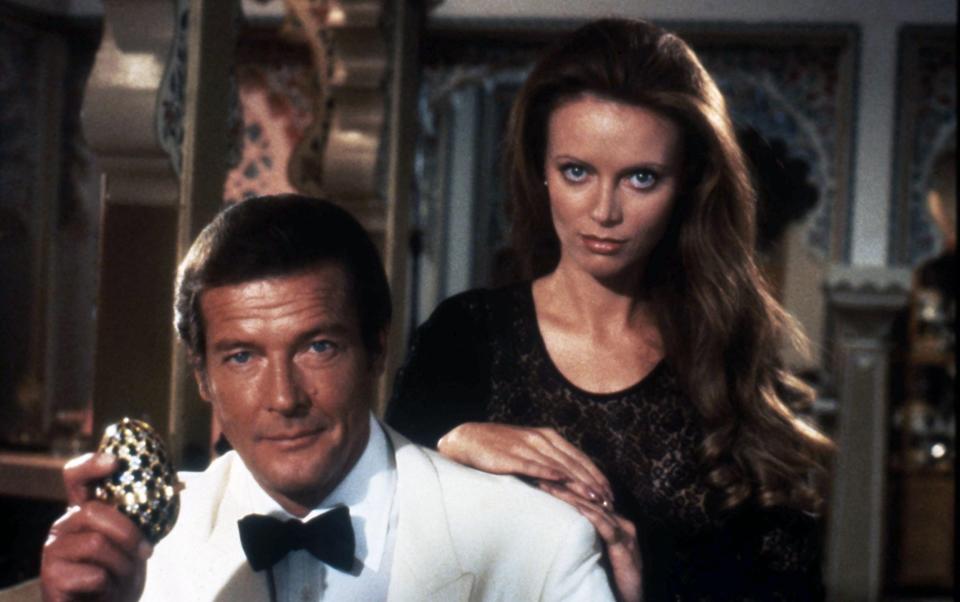
Also co-starring was Indian tennis player Vijay Amritraj, a friend of Cubby Broccoli’s who was cast as Vijay, Bond’s tuk-tuk racing, racket-swinging man in India.
Before setting off to film in the Indian city of Udaipur, Glen’s car – which was parked in the EON garage – was broken into. He wondered if the other secret agent, that rogue 007, had infiltrated their operation.
“I had my passport and script in a bag, ready to leave,” says Glen. “When I came back the boot had been forced open. My bag with the script and passport was gone. Who would be interested in a film script other than a rival company? We speculated about what happened there. Someone wanted to know what our script was about.”
The crew found itself under very real surveillance at Checkpoint Charlie, the notorious crossing point on the Berlin Wall. Principal photography began there for a scene in which Bond crosses into East Germany.
Filming outside the wall without permission from the East German authorities, the crew erected a circus tent and camera crane, which was raised above the wall and peered at the fortifications and no-man’s land beyond. Suddenly, strobe lights began flashing back at them from the East German watchtowers. “They were filming us filming them,” says Glen. “They had no idea what we were doing. I could imagine all this stuff going back to the KGB in Moscow, and them scratching their heads and wondering what the hell was going on.”
Even 007 himself didn’t venture beyond the Berlin Wall. “We could only film so much there,” says Glen. “He starts to walk towards the Russian side, but we daren’t put a foot over in case they arrested Roger.”
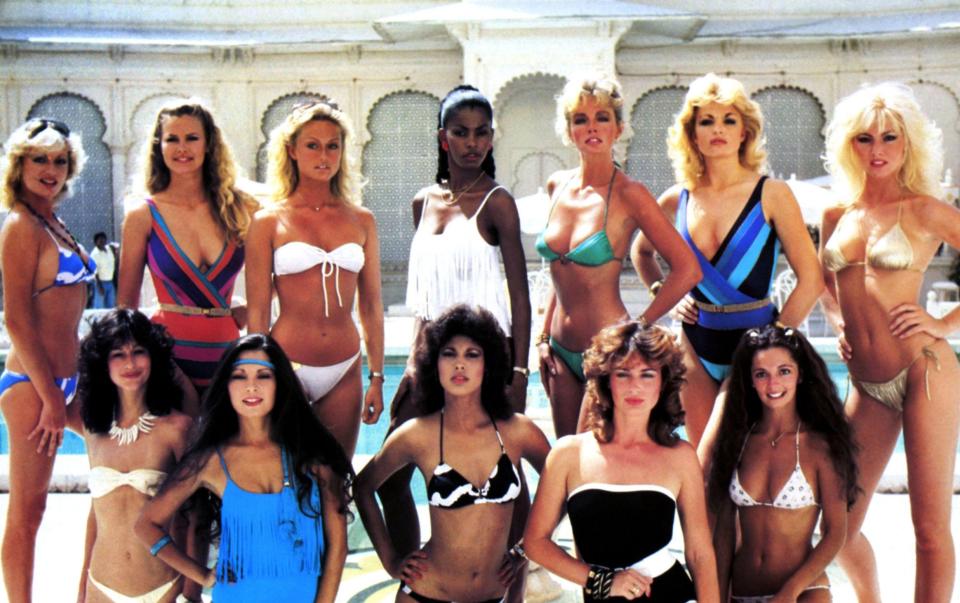
The film’s primary location was Udaipur, chosen partly because Bond hadn’t yet travelled to India on screen, and partly to take advantage of frozen Rupees. It is a stunning setting, particularly the Lake Palace Hotel on Lake Pichola, the home of Octopussy’s all-female cult. (“007 on an island populated exclusively by women?” ponders Q. “We won’t see him ‘til dawn.”) It's not just a exotic-looking background, but a location that creates the whole flavour and character of the film.
In old-school Bond style, the streets of Udaipur are also chock-full of stereotypes that wouldn’t pass muster now: snake charmers, sword swallowers, men on beds of nails, and boiled sheep’s head for dinner – while Bond cracks curry gags. A glaring example of the Moore era's Achilles heel: being a few loafer-footed steps behind modern attitudes.
“Well, we’re definitely not politically correct,” admits Glen. “We wouldn’t get away with a lot of the stuff we did now. We were of our time and reflected conventions of the time. In our films we tried to be up to date. But the woke age we’re living in now is going to ruin films if we’re not careful. You have to think twice before you do anything. You’re going to offend somebody somewhere, no matter what you do.”
See also: Rodge using Q’s hi-tech camera and TV to zoom in and out on a female colleague’s cleavage. In real-world terms, grounds for an industrial tribunal; in Bond, an overgrown schoolboy up to no good. “You kind of accept it from Roger,” says Glen. “You probably wouldn’t accept it from another actor.” Moore’s face when Q tells him off is, like a knock-off Fabergé egg, priceless.
For Glen, humour was crucial to the Roger Moore formula – the thing that set him apart from Connery. “It was pointless Roger trying to copy the Sean Connery style of films,” he says. “We purposely wrote the humour, which was Roger’s greatest asset. He could play the fool.”

But there’s some dramatic heft behind Moore's one-liners, canoodling and mighty eyebrows. Just watch him engaging in a battle of wits with Louis Jourdan’s suave and shady Kamal Khan – trying to outbid one other in a Sotheby’s auction – and squaring off against Berkoff’s Orlov. Or even when wearing clown make-up, warning the circus-goers that they're about to be nuked. “It proved Roger could be serious as Bond,” says Field. “He wasn’t always sending it up.”
Octopussy also has the most sustained action of perhaps any Bond film: from the whiplash-inducing Acrostar jet sequence and high-speed tuk-tuk chase, to Bond running across a moving train and fighting atop a plane thousands of feet in the air.
The tuk-tuk chase (actually adapted Honda 250R motorcycles) was masterminded by French stunt driver Rémy Julienne, who also did the stunt driving on The Italian Job. “He spoke very little English,” recalls Glen, “but we spoke the same language in terms of action.”
For the train stunt, which was filmed back in England, veteran stuntman Martin Grace leapt from a moving car to train (“Really quite simple,” according to Grace) and then clambered along the side and across the roof of the train – a stunt that was complicated by the train's convex roof. On the second day of shooting there was a miscommunication between Grace, the train driver and the pilot of the helicopter containing the camera, which left Grace hanging off the side of the train as it raced into a stretch of un-scouted track. Grace collided with concrete stanchion, tearing the flesh away from his thigh, fracturing his hip, and breaking both his arm and leg. He managed to keep clinging to the train, but spent six months in hospital.
In the final action set-piece, Bond pursues villain Khan and his henchman Gobinda (played by Kabir Bedi – like Jaws with a turban), by hanging to their twin-propeller Beechcraft plane as it takes off. And 32 years before Tom Cruise did it for Mission: Impossible. Bond and Gobinda fight to the death atop of a plane – a stunt that deserves to be talked about alongside the Union Jack parachute jump from The Spy Who Loved Me. “Expertly executed by skydivers BJ Worth and Jake Lombard,” says Field. “These stunts were done for real and that is what made the Bond films of this era so entertaining: the world’s greatest daredevils bringing heart-stopping stunts to 007.”

By the time of Octopussy, Moore was in his mid-50s – getting on in Bond years – and it’s faintly daft to imagine Rodge doing the action. (If anything, it makes his films more entertaining.) But Moore’s charm transcends any creakiness. He wears the Bond persona impeccably: like a sage-green safari suit, or a white tux with generously flared trousers.
Back on the ground at Pinewood Studios, Moore was visited by Christopher Reeve, who was there making Superman III at the same time. “He was a good friend of Roger’s,” says Glen. “We used to laugh because anytime we had some beautiful girls on set, which was quite often, we’d look round and there was Superman in the background in costume.”
The Battle of the Bonds, meanwhile, turned out to be little more than bombastic tabloidese. Far from battling each other, Moore and Connery socialised during the production of their respective films.
Glen had another encounter with the rival film, however, when the daily rushes for Never Say Never Again were mistakenly sent to his editing room. An opportunity to sabotage the rogue agent, surely? “We paid for the car to get their rushes back to Elstree,” says Glen. “We subsidised them in a way! There was no hard feeling between the two crews.”
Octopussy, which premiered on June 6 1983, took $182 million worldwide. Never Say Never Again didn’t open until October in the US and December in the UK. It took $159 million – a respectable number, though it was outclassed by the official Bond. “I think Octopussy is a far superior film,” sums up Field. “Never Say Never Again proved that Sean Connery alone was not enough: you needed all the troupes, tricks and talents of Cubby Broccoli’s circus to make a real James Bond movie.”

 Yahoo News
Yahoo News 
